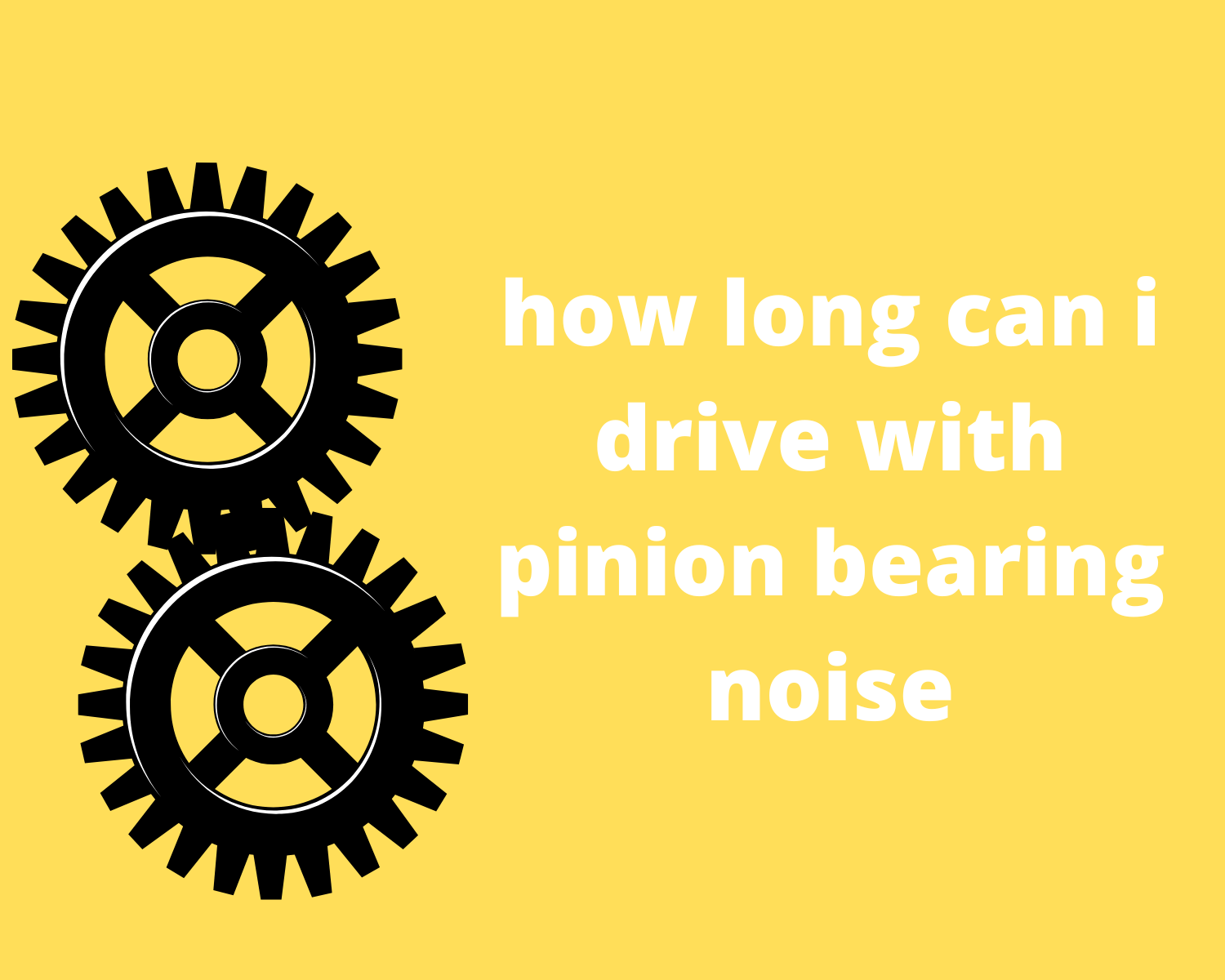So today we are talking about how long can i drive with pinion bearing noise. So read to the end, you should not miss any information in this article. Any strange sound coming from your car is never welcome! Do you hear the sound of gear bearings? What is a sprocket rolling noise? If you have a gear rolling noise, how long can you ignore it before you have a bigger problem? If you have questions about pinion bearings and pinion bearing noise, you’ve come to the right place! Read on to learn more about pinion bearing problems.
How long can i drive with pinion bearing noise – What is a gear bearing?
Cogs are small, round gears found in a car’s rack, pinion, and transmission. The job of the rack and pinion system is to reduce gears. This helps the steering wheel to turn easily and therefore the wheels turn with it.
What does a bad drive pinion bearing look like?
At first, you may notice a loud “hum” as the car slows down and speeds up. This may not happen at all speeds or gears at first, but becomes more common as the pinion bearing continues to wear. You may also notice a squeal, rumble, or rumble from the gears when accelerating.
How long can you drive with a gear rolling noise?
How long can your car run with gear rolling noise without any damage? Well, it may work fine for several months with bad pinion bearings, or it may have problems for a few days. As a rule of thumb, don’t drive more than 1000 miles with a sprocket rolling noise. If you hear clear signs of bad drive pinion bearings, it’s best to take the car to a mechanic as soon as possible.
What happens if you ride with bad pinion bearings?
In addition to annoying noise, you can damage your car if you continue to drive with bad gear bearings. Finally, a bad gear bearing can damage the transmission, driveshaft, and differential. These spare parts will cost much more than repairing a pinion bearing!
If the pinion bearings are badly damaged, the bracket assembly may experience abnormal twisting. This could cause an accident.
FREQUENTLY ASKED QUESTIONS – DRIVETRAIN FAULTS
Once the car is up to size, check the tire wear and check the air pressure. Also check play in the steering, suspension and bearings. Check for wheel alignment issues. Do the tires need to be rotated. Look for signs of cuts and dents on the tires. Compare tire sizes and tire manufacturers. Differences in tire circumference can cause the transmission to seize when operating in 4WD mode. Are the discs the same? Use a torque wrench to check the clamp nuts. Look for marks left by missing wheel weights that can be ripped off during off-road work.
Also be aware that wheel bearings are often submerged in water. Should they be refurbished? Are the wheel hubs working properly. Please note that some wheel locks are electronic and vacuum operated. If suspect, electrical and vacuum system diagnostics may be required. In some hubs, seizure occurs with a slight delay, especially if the outside temperature is low and the grease is thick. Finally, check the inner seals of the wheels. Repair any grease leaks to prevent bearing failure. If a leaking seal is detected, also inspect brakes contaminated with grease.
DRIVETRAIN FAULTS
Surplus
Now raise the vehicle to the maximum lift height and carefully inspect the transmission linkages. If they are universal joints, shake the shaft while turning the joint to watch for any incorrect movement. Feel the rotational roughness. Inspect the rubber boots around the caps for rust. Recommend replacement if you find any roughness or rust. Carefully inspect the CV joints; If the anther is damaged and the lubricant is lost, the CV joint must be replaced immediately. Slowly rotate the driveshaft. Does it show excessive beating? Whether front wheel drive, 4 wheel drive or all wheel drive, the front drive axles can bend due to improper tow bar placement.
Now inspect the engine, transmission and gearbox mounts and replace any that are broken. Check the transmission, transfer case and differentials for leaks. Make sure that the protection panels under the transfer case and the differential are securely fastened.
Final explanation
Then check the transmission fluid levels. Most devices have a plug that can be used to check lubrication. Make sure the lubricant you use meets OEM lubrication requirements. Be aware that some 4×4 vehicles have direct drive or limited slip differentials and may require special lubrication. Pay attention to any differential that appears to be full of foamy fluid. Be aware that water can enter the vent if the differential leaks.
Also check all wiring harness connectors. Today, many transmissions and transfer cases are equipped with electronic speed control. All connectors should remain secure and protected from moisture. Inspect the shift levers for play or debris. Lubricate shift levers and rods as needed.
After a thorough check, notify the customer of any service needs you find. And Also not all of your customers know what 4×4 actually means. Yes, you can help them drive most places most of the time. But make sure they know the limitations of driving and the depth of 4×4 maintenance required as well.
We talked about how long can i drive with pinion bearing noise. I hope that you enjoyed it. See you soon.
